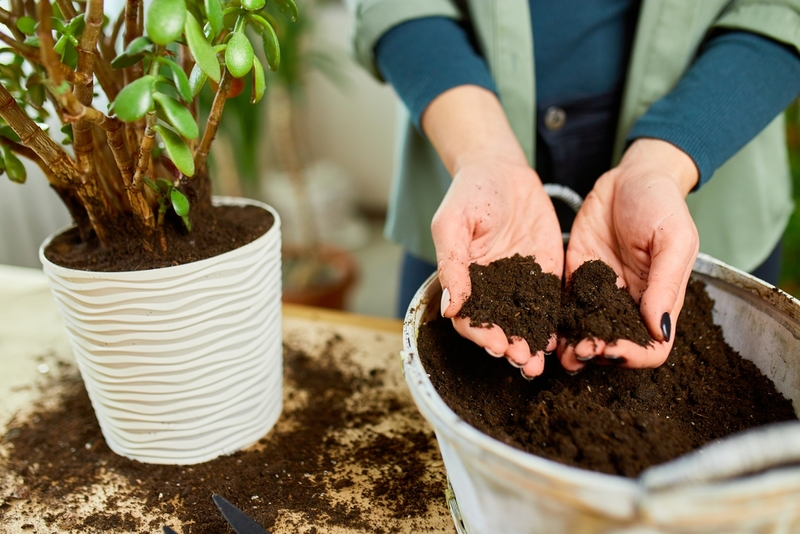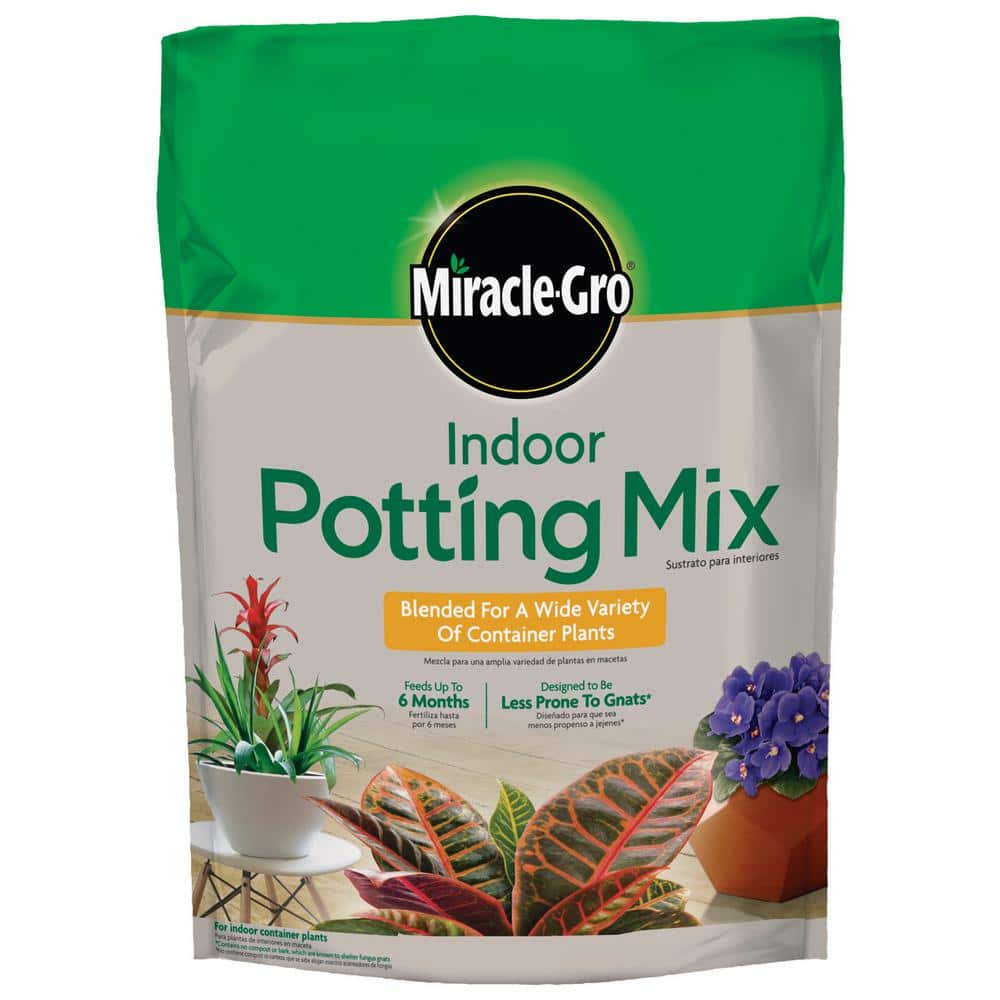Indoor plants can brighten any space, but they need the right soil to thrive. The best soil helps plants grow strong and healthy.
Choosing the perfect soil mix can be confusing. Each plant has unique needs, and the wrong soil can harm them. This guide will help you understand what makes good soil for indoor plants. We’ll explore different soil types, ingredients, and how they affect plant growth.
With the right knowledge, you can ensure your plants get the best care. Enjoy a lush, green indoor garden by using the best soil for your plants.
Introduction To Indoor Plant Soil
Choosing the best soil for indoor plants ensures healthy growth and vibrant foliage. Quality potting mix provides essential nutrients and proper drainage. Your plants will thrive with the right balance of moisture and aeration.
Choosing the right soil for indoor plants is crucial. It impacts plant health and growth. Not all soils suit indoor plants. Some may retain too much water. Others might dry out too quickly. Understanding soil types helps your indoor garden thrive.
Importance Of Soil Choice
Soil choice affects plant health. Good soil provides essential nutrients. It supports root growth and water absorption. Poor soil can lead to weak plants. It may cause diseases or pests. The right soil helps plants grow strong and healthy.
Factors Affecting Soil Quality
Several factors influence soil quality. Texture is one key factor. Soil should be well-draining yet moisture-retentive. Nutrient content is another crucial aspect. Plants need a balance of nitrogen, phosphorus, and potassium. Soil pH also affects plant health. Most indoor plants prefer slightly acidic to neutral soil. Organic matter improves soil structure. It enhances nutrient availability and water retention. Regularly check these factors to maintain healthy soil.
“`

Credit: aledomainstreet.com
Characteristics Of Good Indoor Plant Soil
Choosing the right soil for indoor plants is crucial for their health and growth. Good indoor plant soil must have specific characteristics that cater to the needs of different plants. Let’s explore these characteristics to help you make the best choice for your green friends.
Drainage And Aeration
Drainage is vital for indoor plants. Soil that drains well prevents water from pooling around roots, which can cause root rot. Look for soil that contains materials like perlite or sand. These materials improve drainage.
Aeration is equally important. Soil that is too compact can suffocate plant roots. Good soil has air pockets that allow roots to breathe. Peat moss and coconut coir are excellent for aeration. They keep the soil light and airy.
Nutrient Content
Nutrients are essential for plant growth. Indoor plant soil must have a balanced mix of nutrients. Look for soil that includes organic matter like compost or worm castings. These provide essential nutrients over time.
A nutrient-rich soil will support healthy growth and vibrant plants. You can also add slow-release fertilizers to boost nutrient levels. This ensures your plants get what they need, when they need it.
| Characteristic | Importance | Materials to Look For |
|---|---|---|
| Drainage | Prevents root rot | Perlite, sand |
| Aeration | Allows roots to breathe | Peat moss, coconut coir |
| Nutrient Content | Supports healthy growth | Compost, worm castings, slow-release fertilizers |
Types Of Soil For Indoor Plants
Choosing the right soil for indoor plants is crucial. Different plants need different soils to grow well. Here, we will explore some common soil types for indoor plants.
Potting Mix
Potting mix is ideal for most indoor plants. It is lightweight and drains well, which helps prevent root rot. Many potting mixes contain a blend of peat moss, perlite, and vermiculite. These materials improve aeration and water retention.
Features of a good potting mix:
- Well-draining
- Lightweight
- Contains organic matter
You can find potting mixes that include fertilizers. These help plants grow faster. Always check the label before buying.
Cactus And Succulent Mix
Cactus and succulent mix is perfect for plants that need less water. This mix contains materials like sand, pumice, and perlite. These materials ensure quick drainage and prevent root rot.
Advantages of cactus and succulent mix:
- Excellent drainage
- Prevents overwatering
- Promotes healthy root growth
Cacti and succulents thrive in this mix. They need less water and prefer dry conditions. Using the right soil helps them flourish indoors.
Organic Vs. Inorganic Soil Components
Choosing the right soil for your indoor plants can be challenging. Organic and inorganic soil components both play vital roles. Understanding their benefits helps you make informed decisions.
Organic Matter Benefits
Organic matter in soil boosts plant health. It improves soil structure. It holds water and nutrients effectively. This means your plants get what they need. Organic matter also promotes beneficial microorganisms. These microbes aid plant growth. It includes compost, peat moss, and worm castings. These components enrich the soil naturally.
Role Of Inorganic Materials
Inorganic materials offer stability to the soil. They help with drainage and aeration. This prevents waterlogging and root rot. Common inorganic materials are perlite, vermiculite, and sand. Perlite keeps soil light and airy. Vermiculite retains moisture and nutrients. Sand improves drainage. Combining these materials creates a balanced soil mix. This supports healthy indoor plant growth.
Popular Soil Brands For Indoor Plants
Choosing the right soil is crucial for the health of indoor plants. Different brands offer unique benefits. Quality soil ensures proper drainage, nutrients, and growth. Here are some popular soil brands for indoor plants.
Miracle-gro
Miracle-Gro soil is well-known. It provides essential nutrients for plants. The soil mix promotes strong root development. It has good water retention. This is great for indoor plants. Miracle-Gro soil is easy to find in stores. Many gardeners trust this brand. It also includes slow-release fertilizer. This helps plants thrive longer.
Foxfarm
FoxFarm soil is another excellent choice. It is rich in organic materials. The soil ensures healthy plant growth. It drains well yet retains moisture. FoxFarm soil contains beneficial microbes. This enhances nutrient uptake. It is perfect for indoor plants. The brand offers various blends. Each is suited for different plant needs. Many users notice vigorous growth and vibrant plants.

Credit: aledomainstreet.com
Diy Soil Mixes For Indoor Plants
Creating your own soil mix for indoor plants can be fun and rewarding. Store-bought soils often lack the specific nutrients your plants need. DIY soil mixes let you control the ingredients, ensuring your plants thrive. This section will guide you through basic and customized soil recipes.
Basic Diy Recipe
Start with a simple mix. Combine equal parts potting soil, perlite, and peat moss. Potting soil provides a base and essential nutrients. Perlite improves drainage, preventing root rot. Peat moss retains moisture, keeping your plants hydrated.
This basic mix works for most indoor plants. It’s easy to make and cost-effective. Ensure you mix the ingredients well for even distribution.
Customizing For Specific Plants
Different plants have unique soil needs. Tailor your mix to match those requirements. Succulents need a well-draining mix. Add more perlite or sand. This prevents water retention, which can cause root rot.
Orchids need a special mix. Use bark chips, charcoal, and perlite. This mimics their natural habitat. African violets prefer slightly acidic soil. Add extra peat moss and a bit of garden lime.
By customizing your soil mix, you give your plants the best chance to thrive. Observe your plants and adjust the mix as needed. Happy plants will reward you with lush growth and vibrant blooms.
Common Soil Problems And Solutions
Indoor plants need the right soil to thrive. But, many face common soil problems that hinder plant growth. Understanding these issues and their solutions can help keep your plants healthy. Below, we’ll discuss two major problems: overwatering issues and pest and disease prevention.
Overwatering Issues
Overwatering is a frequent problem for indoor plant enthusiasts. Too much water leads to root rot, which can kill your plants. Here are some solutions:
- Use well-draining soil: Choose a soil mix with materials like perlite, sand, or bark to improve drainage.
- Check soil moisture: Before watering, stick your finger about an inch into the soil. If it feels dry, it’s time to water.
- Proper pot size: Ensure your pot has drainage holes and is the right size for your plant.
Pest And Disease Prevention
Pests and diseases can damage indoor plants. They often come from contaminated soil or poor plant care. Here are some tips to prevent these issues:
- Use clean soil: Always use sterilized soil to avoid introducing pests and diseases.
- Inspect plants regularly: Look for signs of pests or diseases, such as yellowing leaves or sticky residue.
- Proper air circulation: Ensure good airflow around your plants to prevent mold and mildew.
- Avoid over-fertilizing: Too much fertilizer can weaken plants, making them more susceptible to pests and diseases.
By addressing these common soil problems, your indoor plants will stay healthy and vibrant.

Credit: m.youtube.com
Tips For Maintaining Healthy Soil
Indoor plants need healthy soil to thrive. Proper care can keep the soil in top condition. This section will provide tips for maintaining healthy soil for your indoor plants.
Regular Soil Testing
Test your soil regularly. Testing helps you understand the soil’s nutrient levels. It also checks the pH balance. You can use home testing kits. These are easy to find and simple to use. Regular testing ensures your plants get the nutrients they need.
Proper Fertilization
Fertilize your indoor plants properly. Use the right type of fertilizer. Organic fertilizers are a good choice. They provide essential nutrients slowly. Follow the instructions on the fertilizer package. Over-fertilizing can harm plants. Under-fertilizing can lead to nutrient deficiencies. Proper fertilization helps maintain healthy soil and plants.
Frequently Asked Questions
What Is The Best Soil For Indoor Plants?
The best soil for indoor plants is well-draining potting mix. It should contain organic matter, perlite, and vermiculite. This combination ensures proper aeration and moisture retention.
Can You Use Garden Soil For Indoor Plants?
Using garden soil for indoor plants is not recommended. It can compact, leading to poor drainage. Instead, use a high-quality potting mix designed for indoor plants.
How Often Should You Change Indoor Plant Soil?
Change indoor plant soil every 12 to 18 months. This refreshes nutrients and prevents soil compaction. Repotting also gives you a chance to check root health.
Do Indoor Plants Need Special Soil?
Yes, indoor plants need special potting soil. It should be lightweight, well-draining, and nutrient-rich. This helps indoor plants thrive in containers.
Conclusion
Finding the best soil for indoor plants ensures their growth and health. Choose soil with good drainage and proper nutrients. Consider your plant’s specific needs. Experiment with blends to see what works best. Happy plants mean a happy home. Remember, healthy soil is the key to thriving indoor plants.
Keep learning and adjusting for the best results. Enjoy your indoor gardening journey!



